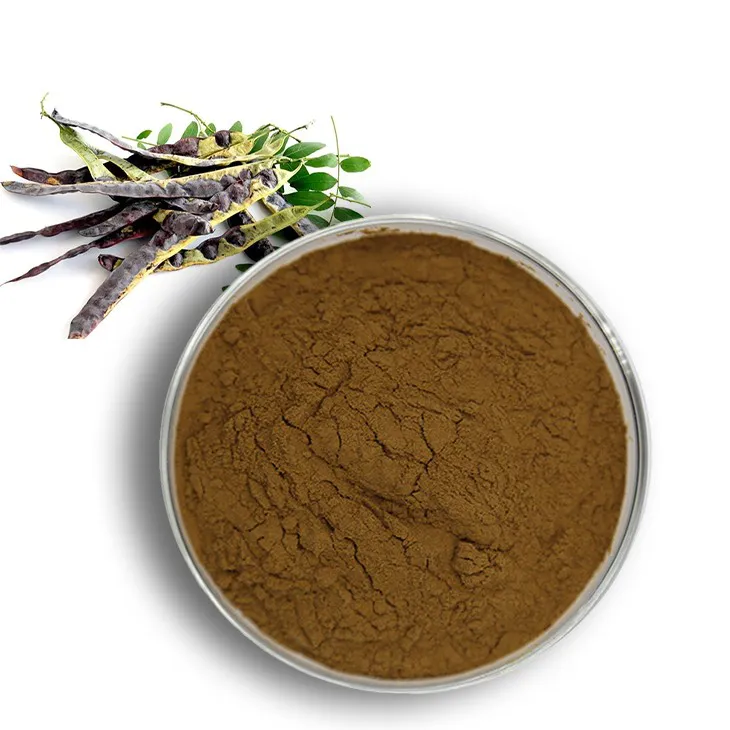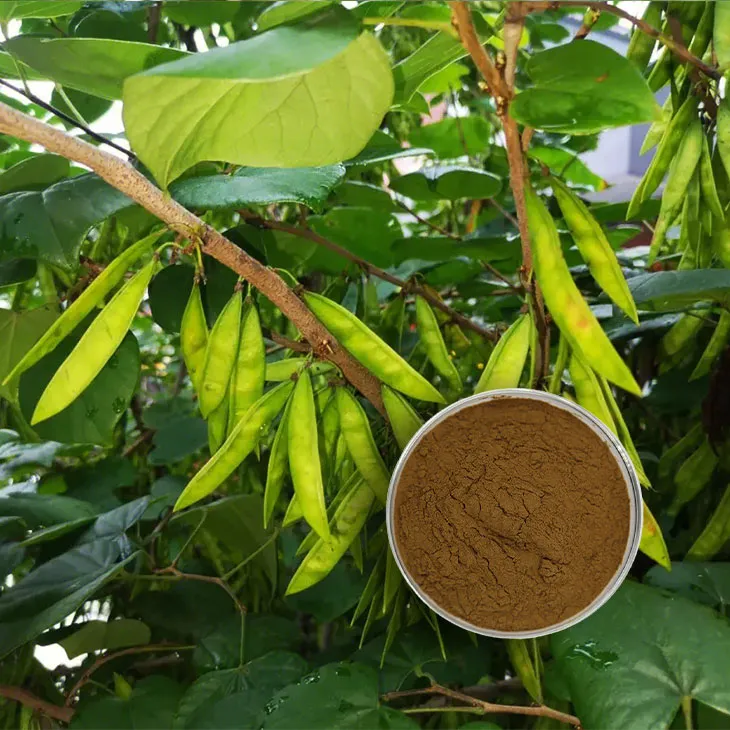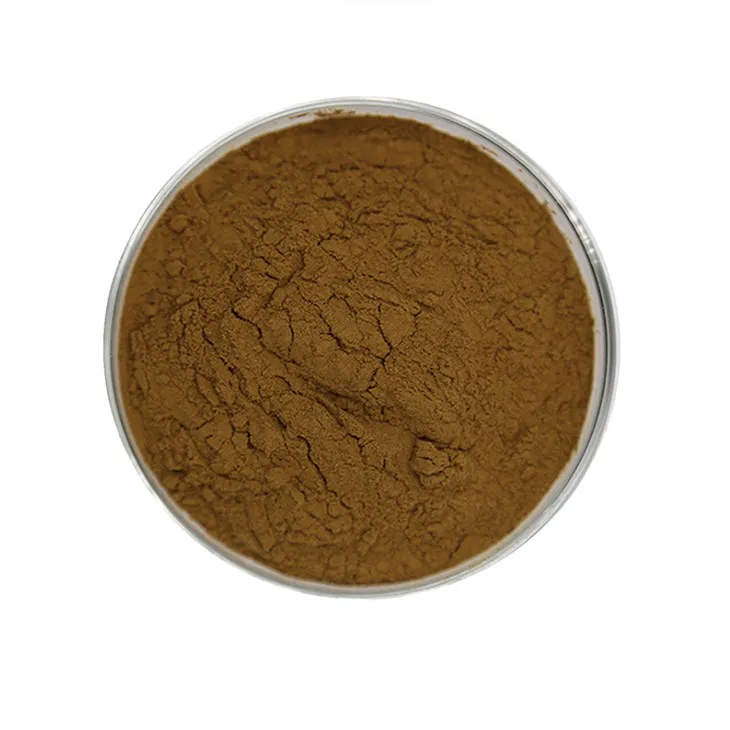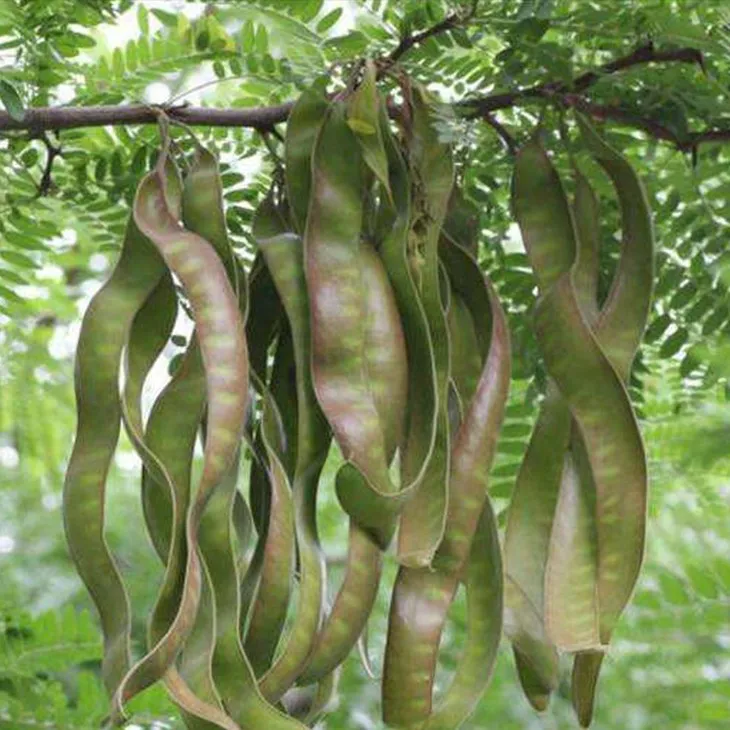- 0086-571-85302990
- sales@greenskybio.com
The best sources of natural saponin extracts.
2024-11-28

Introduction
Saponins are a diverse group of natural compounds that are widely distributed in the plant kingdom. They have attracted significant attention due to their various biological activities and potential applications in different fields, such as medicine, cosmetics, and food industry. This article aims to explore the best natural sources of Saponin Extracts, considering their chemical composition, biological activities, and practical applications.

Medicinal plants as rich sources of Saponin Extracts
Licorice: A time - honored source of saponins
Licorice, scientifically known as Glycyrrhiza glabra, is one of the most well - known plants rich in Saponin Extracts. The root of licorice is particularly abundant in glycyrrhizin, which is a type of saponin. Glycyrrhizin has been studied extensively for its numerous beneficial properties.
Anti - inflammatory properties: Glycyrrhizin has been shown to possess anti - inflammatory effects. It can modulate the immune response and reduce inflammation in the body. Inflammatory conditions are associated with a wide range of diseases, including arthritis, skin disorders, and certain autoimmune diseases. By inhibiting the production of inflammatory mediators, glycyrrhizin can potentially alleviate the symptoms of these conditions.
Antioxidant properties: Another important aspect of glycyrrhizin is its antioxidant activity. Antioxidants are substances that can neutralize free radicals in the body. Free radicals are highly reactive molecules that can cause damage to cells, proteins, and DNA. By scavenging free radicals, glycyrrhizin can help protect the body against oxidative stress, which is implicated in aging, cancer, and cardiovascular diseases.
Traditional and modern medical uses: Licorice has a long history of use in traditional medicine. It has been used to treat various ailments, such as coughs, sore throats, and digestive problems. In modern medicine, licorice extracts are being investigated for their potential in treating more complex diseases, such as liver diseases and certain types of cancers. However, it should be noted that excessive consumption of licorice can have some side effects, such as hypertension and potassium depletion, due to the presence of glycyrrhizin.
Quinoa: A nutritious source of saponins
Quinoa, a pseudo - cereal native to South America, is not only a highly nutritious food but also a source of saponin extracts. The saponins in quinoa are mainly located in the outer layer of the seeds.
Contribution to taste: The saponins in quinoa contribute to its unique taste. They give quinoa a slightly bitter flavor, which is characteristic of this ancient grain. However, for some consumers, this bitter taste may be off - putting. Therefore, in commercial quinoa products, the saponin - rich outer layer is often removed through a process called washing or milling to improve the taste.
Health - enhancing effects: Despite the bitter taste, the saponins in quinoa have potential health - enhancing effects. They have been shown to have anti - microbial properties, which can help protect the body against harmful microorganisms. In addition, some studies suggest that quinoa saponins may have anti - cancer properties. They may be able to inhibit the growth of cancer cells and induce apoptosis (programmed cell death). However, more research is needed to fully understand the mechanisms underlying these effects.
Nutritional value and saponin relationship: Quinoa is known for its high nutritional value. It is a good source of protein, fiber, vitamins, and minerals. The presence of saponins in quinoa may also play a role in enhancing its nutritional properties. For example, saponins may help improve the absorption of certain nutrients in the gut.
Fenugreek: A multi - functional source of saponins
Fenugreek, scientifically known as Trigonella foenum - graecum, is an annual herbaceous plant that is widely cultivated for its seeds, which are rich in saponin extracts.
Blood sugar regulation: One of the most studied aspects of fenugreek saponins is their effect on blood sugar regulation. Fenugreek has been shown to lower blood glucose levels in both diabetic and non - diabetic individuals. The saponins in fenugreek may act by inhibiting the activity of certain enzymes involved in carbohydrate digestion, thereby slowing down the absorption of glucose from the gut. In addition, fenugreek may also improve insulin sensitivity, which is crucial for maintaining normal blood sugar levels.
Cholesterol - lowering abilities: Fenugreek saponins have also been investigated for their cholesterol - lowering abilities. They may be able to reduce the levels of low - density lipoprotein (LDL) cholesterol, which is often referred to as "bad" cholesterol. By reducing LDL cholesterol levels, fenugreek may help lower the risk of cardiovascular diseases. The mechanism underlying this effect may involve the binding of saponins to cholesterol in the gut, preventing its absorption into the bloodstream.
Other potential health benefits: Besides blood sugar regulation and cholesterol - lowering, fenugreek saponins may have other potential health benefits. For example, they may have anti - inflammatory and antioxidant properties, similar to those of licorice saponins. They may also have a positive effect on digestion, by increasing the secretion of digestive enzymes and improving gut motility.

Other natural sources of saponin extracts
Ginseng: A renowned herbal source
Ginseng, a well - known herbal medicine in traditional Chinese medicine and other Asian medical systems, also contains saponin extracts. The saponins in ginseng are called ginsenosides.
Adaptogenic properties: Ginsenosides are believed to be responsible for the adaptogenic properties of ginseng. Adaptogens are substances that can help the body adapt to stress. They can enhance the body's resistance to physical and mental stress, improve energy levels, and promote overall well - being. Ginseng has been used for centuries to combat fatigue, improve cognitive function, and boost the immune system.
Anti - cancer potential: Some studies suggest that ginsenosides may have anti - cancer potential. They may be able to inhibit the growth and metastasis of cancer cells. The anti - cancer effects of ginseng may be related to its ability to modulate the immune system, induce apoptosis in cancer cells, and inhibit angiogenesis (the formation of new blood vessels that supply nutrients to tumors).
Skin health and anti - aging: Ginseng saponins may also have beneficial effects on skin health. They can improve skin elasticity, reduce wrinkles, and enhance skin hydration. These effects may be due to the antioxidant and anti - inflammatory properties of ginsenosides. In addition, ginseng extracts are often used in cosmetics products for their anti - aging properties.
Soapwort: A plant with high saponin content
Soapwort, scientifically known as Saponaria officinalis, is a plant that is named after its high saponin content. The saponins in soapwort have been used for centuries for their detergent - like properties.
- Traditional uses: In traditional medicine, soapwort has been used to treat skin diseases, such as eczema and psoriasis. The saponins in soapwort can form a lather when mixed with water, which can be used to clean the skin gently. In addition, soapwort has also been used as a natural detergent for washing clothes and cleaning household items.
- Modern applications: In modern times, soapwort saponins are being investigated for their potential in the cosmetic and pharmaceutical industries. They may be used as natural surfactants in skin - care products, such as shampoos and soaps. The use of soapwort saponins as natural surfactants can provide a more environmentally friendly alternative to synthetic surfactants.
Horse chestnut: A source with unique saponin properties
Horse chestnut, scientifically known as Aesculus hippocastanum, contains saponin extracts known as aescin.
Venous insufficiency treatment: Aescin has been widely used in the treatment of venous insufficiency. Venous insufficiency is a condition in which the veins in the legs have difficulty returning blood to the heart. Aescin can improve venous tone, reduce capillary permeability, and decrease leg swelling. It is often used in the form of creams or tablets for the treatment of varicose veins, hemorrhoids, and other venous - related problems.
Anti - inflammatory and antioxidant effects: Like other saponin - containing plants, horse chestnut also exhibits anti - inflammatory and antioxidant effects. Aescin can inhibit the production of inflammatory mediators and scavenge free radicals. These properties may contribute to its effectiveness in treating venous insufficiency and other inflammatory conditions.

Conclusion
In conclusion, saponin extracts from natural sources offer a wide range of potential benefits in various fields. Medicinal plants such as licorice, quinoa, fenugreek, ginseng, soapwort, and horse chestnut are among the best sources of saponin extracts. Each of these plants has its own unique chemical composition and biological activities, which contribute to their potential applications in medicine, cosmetics, and food industry. However, further research is still needed to fully understand the mechanisms of action of saponin extracts and to explore their potential in treating various diseases and improving human health. Additionally, when using saponin - containing plants or their extracts, it is important to consider the potential side effects and ensure their safe and appropriate use.

FAQ:
What are the main natural sources of saponin extracts?
Some of the main natural sources of saponin extracts include licorice, quinoa, and fenugreek. Licorice root is rich in glycyrrhizin (a saponin) with anti - inflammatory and antioxidant properties. Quinoa contains saponins that affect its taste and may have health - enhancing effects. Fenugreek seeds are full of saponins which have been studied for blood sugar regulation and cholesterol - lowering abilities.
What are the health benefits of saponins from licorice?
The saponin in licorice, glycyrrhizin, has anti - inflammatory and antioxidant properties. These can potentially help in reducing inflammation in the body and combating oxidative stress, which is associated with many diseases and aging processes.
How do saponins in quinoa affect its taste?
The saponins in quinoa contribute to its unique taste. However, they can also give it a slightly bitter or soapy flavor if not properly processed. This is why quinoa is often washed thoroughly before consumption to reduce the saponin content to an acceptable level for taste.
Can saponins from fenugreek really regulate blood sugar?
Studies have suggested that saponins in fenugreek seeds may have an effect on blood sugar regulation. However, more research is needed to fully understand the mechanisms and the extent of this effect. They may interact with the body's metabolic processes related to glucose uptake and insulin sensitivity.
What other potential applications do saponin extracts have?
Saponin extracts have applications in various fields. In addition to their potential health benefits in medicine, they are also used in cosmetics. Their properties may be utilized in skincare products for example, perhaps due to antioxidant or other beneficial effects on the skin. They may also have applications in the food industry for their potential to add unique flavors or functional properties.
Related literature
- Saponins: Properties, Applications, and Health Benefits"
- "Natural Saponin Sources and Their Bioactive Properties"
- "The Role of Saponins from Medicinal Plants in Modern Medicine"
- ▶ Hesperidin
- ▶ citrus bioflavonoids
- ▶ plant extract
- ▶ lycopene
- ▶ Diosmin
- ▶ Grape seed extract
- ▶ Sea buckthorn Juice Powder
- ▶ Beetroot powder
- ▶ Hops Extract
- ▶ Artichoke Extract
- ▶ Reishi mushroom extract
- ▶ Astaxanthin
- ▶ Green Tea Extract
- ▶ Curcumin Extract
- ▶ Horse Chestnut Extract
- ▶ Other Problems
- ▶ Boswellia Serrata Extract
- ▶ Resveratrol Extract
- ▶ Marigold Extract
- ▶ Grape Leaf Extract
- ▶ blog3
- ▶ blog4
-
Nature's best β - carotene.
2024-11-28
-
Standard - process Coenzyme Q10.
2024-11-28
-
Bulk purchase of pomegranate extract.
2024-11-28
-
Extraction process of bilberry extract.
2024-11-28
-
Manufacturers of Euphrasia Extract.
2024-11-28
-
Chinese peppermint oil powder factories.
2024-11-28
-
Horse Chestnut Extract
2024-11-28
-
Buckthorn bark extract
2024-11-28
-
Passionflower Extract
2024-11-28
-
Lotus leaf extract
2024-11-28
-
Bilberry Extract
2024-11-28
-
Acerola Extract
2024-11-28
-
Eyebright Extract
2024-11-28
-
Marigold Extract
2024-11-28
-
Mulberry leaf Extract
2024-11-28
-
Maca Extract
2024-11-28





















